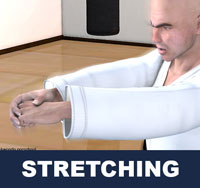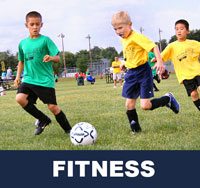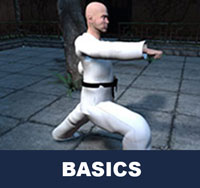Taekwondo 태권도Taekwondo Preschool
Promotion from one geup to the next can proceed rapidly in some schools, since schools often allow geup promotions every two, three, or four months. Students of geup rank learn the most basic techniques first, and then move on to more advanced techniques as they approach first dan. Many of the older and more traditional schools often take longer to allow students to test for higher ranks than newer, more contemporary schools, as they may not have the required testing intervals. View Taekwondo belt levels »

About Static Stretching
Sports injuries are injuries that occur in athletic activities. They can result from acute trauma, or from overuse of a particular body part. Please see a certified specialist or doctor for sports injuries. Proper guidance and instructions are needed from a certified Master Instructor ( 사범님 sabeomnim ) to ensure safe training.
Static stretching is used to stretch muscles while the body is at rest. It is composed of various techniques that gradually lengthen a muscle to an elongated position (to the point of discomfort) and hold that position for 30 seconds to two minutes. 30 seconds is the minimum duration to get the benefits of stretching, whereas two minutes is the maximum (if a position can be held for more than two minutes, a farther stretch should be performed). During this holding period or directly afterwards, participants may feel a mild discomfort or warm sensation in the muscles. Static stretching exercises involve specialized tension receptors in our muscles. When done properly, static stretching slightly lessens the sensitivity of tension receptors, which allows the muscle to relax and to be stretched to greater length.
There is doubt over the effectiveness of static stretching, with some circles of sport strongly recommending against it, such as soccer, slamball and rugby league. Recently, there has been a controversy over static stretching saying that it gets you ready but makes you weaker.
Isometric Stretching/Static Stretching is often advocated by many coaches and fitness experts as great way to stretch before an athletic event or exercise activity. However, in reality static stretching has been proven detrimental to performance, as recent studies have shown that it tampers explosive ability. Static stretching also augments the joint and can promote instability in the joint, thus making an individual more susceptible to injury. Individual should turn to more dynamic type stretching to enhance rather than hinder performance.
Stretching helps keep you flexible and counteracts the repetitive movements of exercise. When performed correctly and at the right time, static stretches help you lengthen tight muscles and improve your balance and overall fitness. A good stretch session also helps relieve stress and tension.
To perform a static stretch properly, you should get far enough into the stretch that you feel a slight pull but no pain. It helps to exhale as you get into a stretch. When you're holding a stretch, breathe normally and avoid the tendency to hold your breath. Repeat each static stretch two to three times.

Related Articles
Physical fitness is a general state of health and well-being or specifically the ability to perform aspects of sports or occupations. It is a set of attributes or characteristics that people have or achieve that relates to the ability to perform physical activity. View Physical Fitness »
- Stretch - Form of physical exercise in which a specific muscle or tendon (or muscle group) is deliberately flexed or stretched in order to improve the muscle's felt elasticity and achieve comfortable muscle tone. The result is a feeling of increased muscle control, flexibility and range of motion.
- Flexibility - Refers to the absolute range of movement in a joint or series of joints, and length in muscles that cross the joints. Flexibility in some joints can be increased to a certain degree by exercise, with stretching a common exercise component to maintain or improve flexibility.
- Endurance - Ability of a practitioner to exert itself and remain active for a long period of time, as well as its ability to resist, withstand, recover from, and have immunity to trauma, wounds, or fatigue.
- Balance - Ability to maintain the line of gravity (vertical line from centre of mass) of a body within the base of support with minimal postural sway. Sway is the horizontal movement of the centre of gravity even when a person is standing still.
- Agility - Or nimbleness is the ability to change the body's position efficiently, and requires the integration of isolated movement skills using a combination of balance, coordination, speed, reflexes, strength, and endurance.

Taekwondo Basics
Here is where you can learn more about Taekwondo 태권도. Knowing the fundamental basics is very important for your learning path as you build your skills and knowledge. There are certain rules that need to be followed to show respect to the master ( 사범님 sabeomnim ), the instructors ( 교사님 gyosannim ), other practitioners and to the martial arts. They vary between schools but many have similar rules and guidelines. For more information View Taekwondo Basics »
Please follow the guidance of a certified Master Instructor or trainer when doing sports related activities. The article provided on this page is information that is widely available on Wikipedia articles "Stretching", "Static Stretching", "Dynamic Stretching", "Ballistic Stretching". Risk of injury can be reduced by completing an effective warm up consisting of a heart raiser to get your pulse up, followed by sport specific dynamic stretches (stretches whilst moving).
RESOURCES
This article uses material from the Wikipedia article "Static Stretching", which is released under the Creative Commons Attribution-Share-Alike License 3.0.









